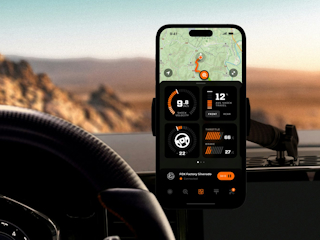This idea started to take form during an informal lunch conversation about the future of B2B ecommerce platforms in a world where smart agents do not just assist commerce but conduct it.
With large language models (LLMs) now capable of accessing and interpreting structured data and agents getting smarter rapidly, it is no longer a leap to ask: What happens when the purchaser in B2B commerce is no longer human?
In B2B, where complexity, volume and recurring purchases dominate, this could be transformative.
Within three to five years, we will start seeing AI agents scanning thousands of SKUs, reading spec sheets, comparing availability and lead times and even negotiating prices, all autonomously, not with one or two suppliers but with dozens or hundreds.
Let that sink in for a moment.
The limitations of humans in the B2B purchasing process
B2B purchasing today is often limited by human capacity. Selecting the right products, creating the order lists, and comparing availability and lead times are time-intensive tasks, which often need to draw upon knowledge from multiple people to be completed.
To deal with some of this complexity, companies are limiting the number of suppliers they work with, as onboarding with suppliers can also be time-intensive.
The limiting factor is often how much time a buyer can invest in managing relationships, navigating portals and comparing offers. Yet even as ecommerce has digitized this experience, it is still optimized for humans. Portals, Punchout and EDI feeds in the end assume that a person is doing the browsing, selecting and purchasing.
The rise of purchasing agents
Autonomous agents don’t need an interface and have their own limitations. But with access to structured, accessible, decision-ready data, smart agents could fulfill all the roles and capabilities needed in the purchasing process.
Picture a procurement agent receiving a complex sourcing request for replacement parts for industrial machinery, each with specific requirements. The agent parses technical specs, queries available Model Context Protocol servers, validates options, negotiates with suppliers, and prepares the quote for review or approval.
Then, across a multitude of suppliers, it would select the suppliers that best match business needs, all at a speed and scale humans are not capable of.
In theory, this could collapse days of work into minutes. Or, one step further, an operational industrial machine could order its own replacement parts as needed.
Herein lies a challenge. Much of today’s procurement data remains siloed, messy or locked behind authentication walls. And while platforms like SAP Ariba or Coupa offer supplier networks, data standardization across industries is inconsistent. Until that changes, agentic AI will struggle to operate at full potential.
In practice, purchasing agents would start in narrow, well-scoped areas: recurring, low-risk purchases where data is clean and decisions are rule-based.
And even then, human oversight will remain essential, with AI being an augmentation of current processes, not a full replacement. The stakes in purchasing, contractual obligations, regulatory compliance and supplier relationships are high. Enterprises will need time to build trust in agent-driven processes, particularly for strategic or high-value purchase processes.
Data exposure becomes the new battlefield
To function autonomously, purchasing agents need frictionless access to product catalogues, specifications, documentation, pricing, availability and lead times.
B2B commerce sellers will need to make much more machine-readable data available, including information that is typically proprietary or behind authentication, to give their buyers easy access to their commerce platforms.
That shift raises new questions around trust. Will companies be willing to share sensitive pricing or inventory data with agents? Only if robust digital identity and permission systems evolve toward a model that enables agents to identify themselves as a trustworthy source acting on behalf of a company.
For early adopters, there may be a window of competitive advantage. Companies that structure and expose their data effectively may simply outcompete those who remain locked behind rigid structures and login walls.
During this transformation, quality, logistics, service and aftercare will become even bigger drivers of competitive advantage, as agents can easily compare prices and availability.
Widespread adoption depends not just on technological enablement, though. It also requires a cultural shift.
A new channel (and a new kind of user)
MCP is not just a protocol (although it technically is). It represents the first time we have seen a real shift from human-driven interactions to machine-led (or machine-facilitated) interactions.
Over time, this could rival or even replace legacy B2B channels like ecommerce sites, apps, EDI or customer portals, especially in situations where complexity is lower or standardization is already high.
Still, I do not think that shift will be sudden. Channels in B2B commerce tend to evolve slowly. It is likely that agentic commerce will run alongside traditional channels for years before slowly replacing existing channels.
Adoption will depend not only on the speed of AI innovation, but how well MCP and similar protocols integrate into current tech landscapes. Even still, I am sure that the human resistance to change will play a key role.
This also raises interesting side conversations. How do we optimize for machine-to-machine interactions when we’ve spent so long focusing on making interactions centered around humans. UX design won’t vanish, but it will have to evolve.
For humans, we’ll still design interfaces and workflows. For machines, we’ll increasingly optimize for clarity, structure and semantic context to deliver content that AI can read and act upon. This all ultimately means improving UX, as AI is reshaping that content for a human to digest.
An opportunity or a threat for commerce platforms?
Today’s B2B commerce platforms play a critical role. They aggregate, expose and often enrich commerce data from internal systems to enable rich customer experiences.
But if MCP protocols can expose data directly from the internal systems safely, or if a new aggregation layer focused on enabling AI takes on this role in the future, the commerce platform may become less central or evolve into something more modular with niche capabilities.
On the other hand, I expect commerce platforms will be faster in adopting agentic technology than will traditional internal systems and processes. And with agentic commerce being an additional channel initially, not a full replacement of ecommerce, these platforms will remain the aggregators and enablers of public experiences.
We may see ecommerce platforms provide services like agent-level permissions, negotiation orchestration or real-time procurement analytics. Alternatively, they may fragment into smaller, headless components that agents call as needed, such as quoting engines, tax calculators or risk scorers.
A new type of platform will also appear: a broker platform/marketplace that connects AI agents with suppliers in a trustworthy manner, facilitating a certain level of trust and curation.
So, who builds this future? Platform vendors are rapidly adopting. Agencies will step in to bridge the gap to enabling agentic commerce as a new B2B commerce channel. But there’s also room for challengers, new players who specialize in agent-first, machine-facing commerce layers.
The critical note
Let’s be clear: This shift won’t happen in a vacuum. Realistically speaking, there are still some hurdles along this path:
- Data infrastructure is immature. Many companies still rely on PDFs, spreadsheets and/or low-quality data that power their commerce experiences. Agent-friendly catalogues aren’t widespread yet.
- Purchasers may resist. AI feels like a black box, and in a world of contracts, compliance, trust, personal relationships and cost control that’s a hard sell.
- Companies aren’t all ready. Companies may not want to negotiate with bots. Many don’t have the trust, or the tech, for that interaction model yet.
That’s why I believe, in the short-term, agentic commerce will augment, not replace, purchasing processes. It will manage standard orders and repetitive tasks and support human professionals. And as it earns trust, it will earn scope and complexity, and a fundamental shift will begin in which processes get reinvented around agents.












